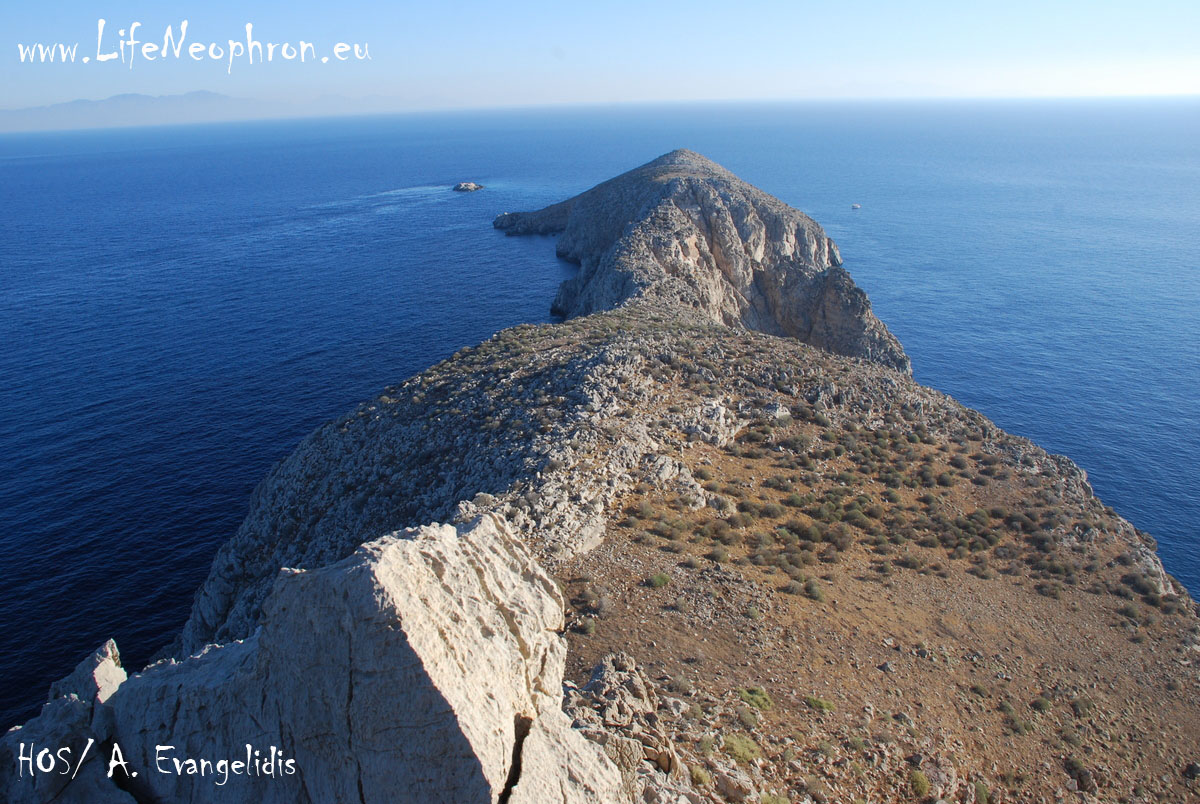2013 certainly hasn’t treated our juvenile Egyptian Vultures kindly. Out of 10 individuals tagged with satellite transmitters in the framework of Neophron LIFE+ Project in Greece, Bulgaria, FYROM and Albania, 5 drowned during their attempt to cross the Mediterranean and reach the northern coast of Africa, while another one was killed by a hunter in FYROM before even starting its migration.

Now, another bird, Elina, also coming from FYROM, met her end on a small island of Southern Dodecanese. What in any other case is an idyllic islet in the Aegean Sea, this time proved a death trap for the juvenile Egyptian Vulture. Elina, after losing her way in Turkey, made a desperate attempt to orientate by turning towards Dodecanese and flew south, reaching Rhodes. However, possibly due to bad weather conditions, she was forced to turn back north, where she got trapped on an islet. Bad weather was also the reason that the field researchers of the Hellenic Ornithological Society failed to approach the islet in time. When they managed to do so, they only found a large pile of Elina’s feathers. A plausible explanation is that Elina, starved and dehydrated after days of wandering, was attacked by two Bonelli’s Eagles, the permanent residents of the islet. Ironically enough, Elina’s brother, Elin, had also been predated by a raptor, an Eagle Owl.

Natural juvenile mortality among Egyptian Vultures is known to be particularly high; according to estimations, only 1 out of 7 individuals finally reach adult age. But things get complicated when intense human-originated threats add on this fact. A healthy, stable population would be “prepared” to suffer and adjust to natural casualties as such without letting them pose a serious threat for the survival of the species. However, the dramatically low population of the Egyptian Vultures in the Balkans caused by human pressure and activities, as well as the extremely low recruitment rates of the breeding population, have turned juvenile mortality into an important threat.



